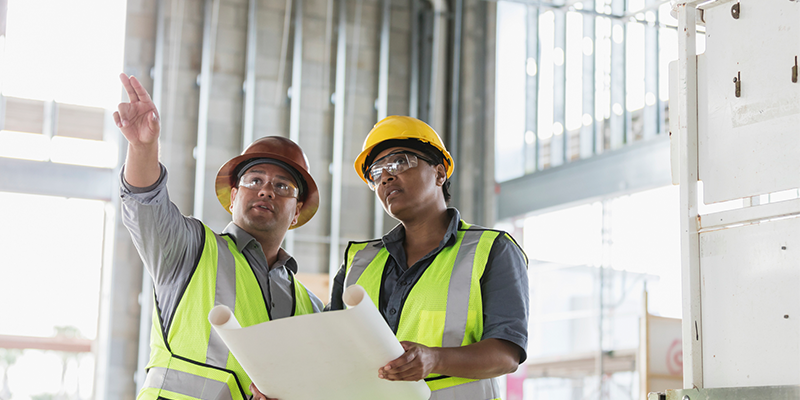The next phase of advanced manufacturing innovation is ready for launch in the Long Beach region of California. Attendees of NAIOP’s I.CON West were able to go behind the scenes on a project tour of cutting-edge advanced manufacturing facilities in Douglas Park, an industrial, retail and hotel center that spans more than 260 acres adjacent to the Long Beach Airport.
Morf3D: Advancing Aerospace with Additive Manufacturing
The first stop on the tour: Morf3D, a company that primarily serves clients in the aerospace, space and defense industries. These industries require highly specialized equipment that meets stringent specifications including being durable, lightweight and thermal-resistant, which Morf3D achieves using metal additive engineering and manufacturing.
The 90,000-square-foot Douglas Park building was a spec building that Morf3D has been adapting to suit the varying needs of their clients, from security clearance requirements to power needs. Some tenants require temperature control within four degrees to keep the equipment running smoothly and prevent any quality concerns with the products; others require the temperature to not vary more than two degrees.
While Morf3D started out manufacturing parts for clients, they have since transitioned to focus on technology solutions for high-volume manufacturing, including automation to advance the industry. These certified production lines can then be transferred back to their customer or another location or supplier around the globe.
So, what exactly is being created at Morf3D’s Douglas Park facility? The company can’t really say – too many security restrictions and proprietary company information. But they did create the first additive manufacturing production of a rotary craft application for the Boeing Chinook helicopter – a prime example of metal additive printing processes used in a large scale.
Heliogen: Unlocking the Power of Sunlight to Replace Fossil Fuels
The second stop on the tour brought attendees to the manufacturing site for Heliogen, a renewable energy technology company on a mission to “decarbonize industry.” The company uses computer-controlled mirrors to capture sunlight that it then transforms into carbon-free thermal energy through a multistep process.
Heliogen uses state-of-the-art software to control the movement of the mirrors (called Heliostats), maximizing sun exposure for each of the fields with up to 50,000 mirrors at all times of the day. When the day is done, the system can store any surplus energy – sometimes as much as two-thirds of the amount generated that day.
When it came to site selection, Heliogen was looking for a location with flexibility, scalability, and one that they could get up and running quickly. The company also looked at where their production and design team members lived to ensure proximity to their talent, knowing that their employees would not want to commute very far.
The 90,632-square-foot building features 30-foot clear heights, eight dock height doors, one drive-in door and 3,000 amps of power. It provides abundant parking outside, meditation/game spaces and other amenities that produce happier, healthier teams. The production area, with highly automated mirror assembly line, includes several stations that employees can rotate through to reduce ergonomic strain from repeated movements.
Heliogen is constantly innovating and working to further automate their production lines as well as site installation processes. Each generation of Heliostats is bringing them closer to their goal of decarbonizing industry across the world.

This post is brought to you by JLL, the social media and conference blog sponsor of NAIOP’s I.CON West 2023. Learn more about JLL at www.us.jll.com or www.jll.ca.








